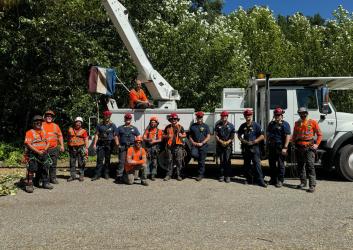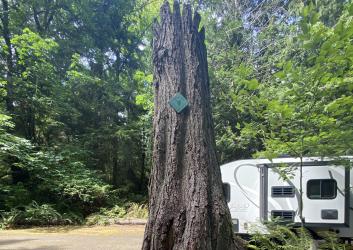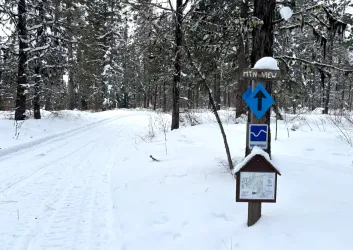Ready for winter? Here are a few tips to keep it merry and bright
What to bring on a cold weather outing
Whether you love the dark clouds and moisture of Puget Sound, the Cascade concrete of the Pacific crest or the eastside’s fluffy pow, the world is your family-friendly playground at our state parks and Sno-Parks.
But winter adventures do add a few layers complexity, pun intended.
Never fear! We’ve got tips (learned mostly through trial and error) on how to stay warm and dry in the outdoors this winter.
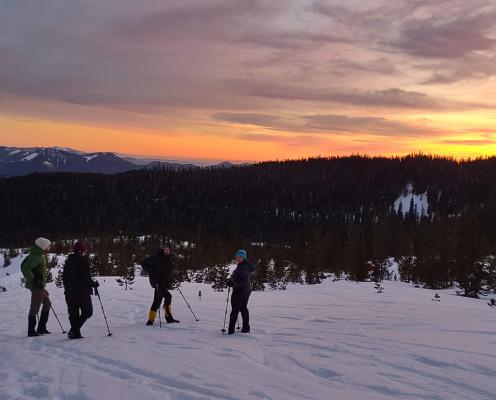
Dress for the weather:
Can you still hear your mom’s voice saying, “Don’t forget your jacket!”?
We hate to take sides, but she was probably right.
Really. Please don’t forget your jacket — or jackets. When you pack for a park in the winter, bring a hooded rain jacket and a warm puffy (down or synthetic) over a fleece or wool shirt, plus three similar layers for your bottom half. We recommend down for dry, snowy jaunts because it traps body heat and keeps you warm. Synthetic wicks sweat away from your body, and wool stays warm-ish, even when wet. Calf-high gaiters fit over your shoes and pant legs to keep snow out of your shoes.
You may have also heard your grandmother say, “Cold hands, warm heart.”
Not to contradict grandma, but we urge you to bring two pairs of gloves or mittens, so your hands don’t get cold. Nobody wants to end up with the screaming barfies, a unique awfulness that results from very cold hands. Pack extra wool or synthetic socks as well, in case one pair gets wet.
Waterproof insulated boots can keep your feet warm (duck boots will keep them dry, but not warm, and they’re uncomfortable for hiking, biking or snowshoeing). Hand and foot warmers may help for an hour or two if you don’t have warm boots or gloves.
Bring a headlamp or flashlight. Winter days are short, and the forest can darken at 4 p.m.
Finally, we suggest carrying a thermos of hot chocolate, cider, tea or your favorite warm drink. A hot beverage will keep you hydrated when you don’t feel like drinking cold water.

Dress your ride for the weather too:
We’re not talking sleigh bells or lights on your car. (But, hey, you do you…) You’ll want a winter emergency kit for your ride, in case you get stuck in the snow.
Maybe your car is an off-road SUV, or maybe it’s a put-put vehicle that gets you around town, but not much farther. If it’s the latter, we suggest finding a carpool buddy with snow-worthy wheels. But, even a 2WD, low-clearance beater, sports car or EV will get you to the rainforest.

A winter emergency kit includes:
- Extra snacks
- Extra water
- Sleeping bag or quilt
- Warm clothing
- Reflective clothing, flashlights or headlamps
- Flares
- Kitty litter or snow mats and a shovel, which could help you get out of the snow if you lose traction
- Snow chains that fit your wheels and knowledge of their use
- First aid kit
- Hand and foot warmers
- An emergency communication device (In-Reach or similar), if possible
- A full tank of gas, and a gas can with an extra gallon of fuel
- Portable power for your phone
- Your destination, ETA and overdue time, left with someone responsible (text that person when you get home, so they don’t accidentally report you missing).
If you get stuck in snow, your first job is to try to get out.
Failing that, your goal is to stay warm until help arrives, hence the warm clothes, hand/foot warmers and quilt.
You may need the shovel to keep digging your car out if a snowstorm comes in (hopefully, those extra socks and gloves will come in handy if you get wet from shoveling).
If you’re stranded on a rural road with no cell service, you might have to walk to find cell service. Headlamps, flashlights and reflective clothing will let you stay visible – and flag down help if someone drives by.
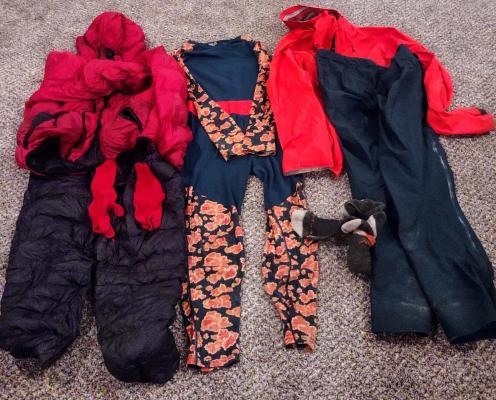
A final thought:
Remember to check the National Weather Service and Washington Department of Transportation for road conditions before you go. If you’re planning a snow day, check the Northwest Avalanche Center for avalanche danger. If conditions seem unfavorable, you’ll be in for a miserable trip at best, and a dangerous one at worst. The snow will be here through April, so choose to play another day!
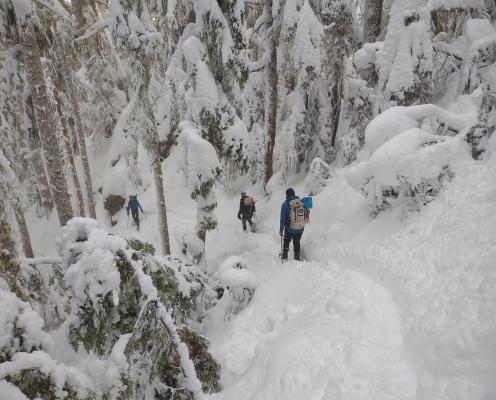
Originally published December 22, 2023


